World Heritage Site
SHIMPOKAN
Munakata Taisha Museum
World Heritage Site
SHIMPOKAN
Munakata Taisha Museum
Highlights of the
Shimpokan Collection
A treasure trove of 80,000
national treasures
Shimpokan, Munakata Taisha Museum, is home to 80,000 artifacts that were discovered at the ancient ritual sites on the Sacred Island of Okinoshima. Dating from the fourth century, these artifacts have all been designated as national treasures, due to their cultural, historical and artistic importance. Many are unique, having lain undisturbed for so many centuries at the ritual sites of Okinoshima. What is more, these national treasures of Shimpokan bear witness to the rich tradition of exchange and interaction that characterized the ancient states of the Japanese archipelago, Korean peninsula and China. From bronze mirrors, to a dazzling gold ring, bronze gilt dragon heads, meticulously crafted miniature items, cutting-edge ceramic techniques, and even cut glass from Persia, the collections of Shimpokan take the visitor on a journey through centuries of rituals that grew up around belief in the Three Goddesses of Munakata and the mysterious and sacred island of Okinoshima, a beacon for mariners and believers alike.

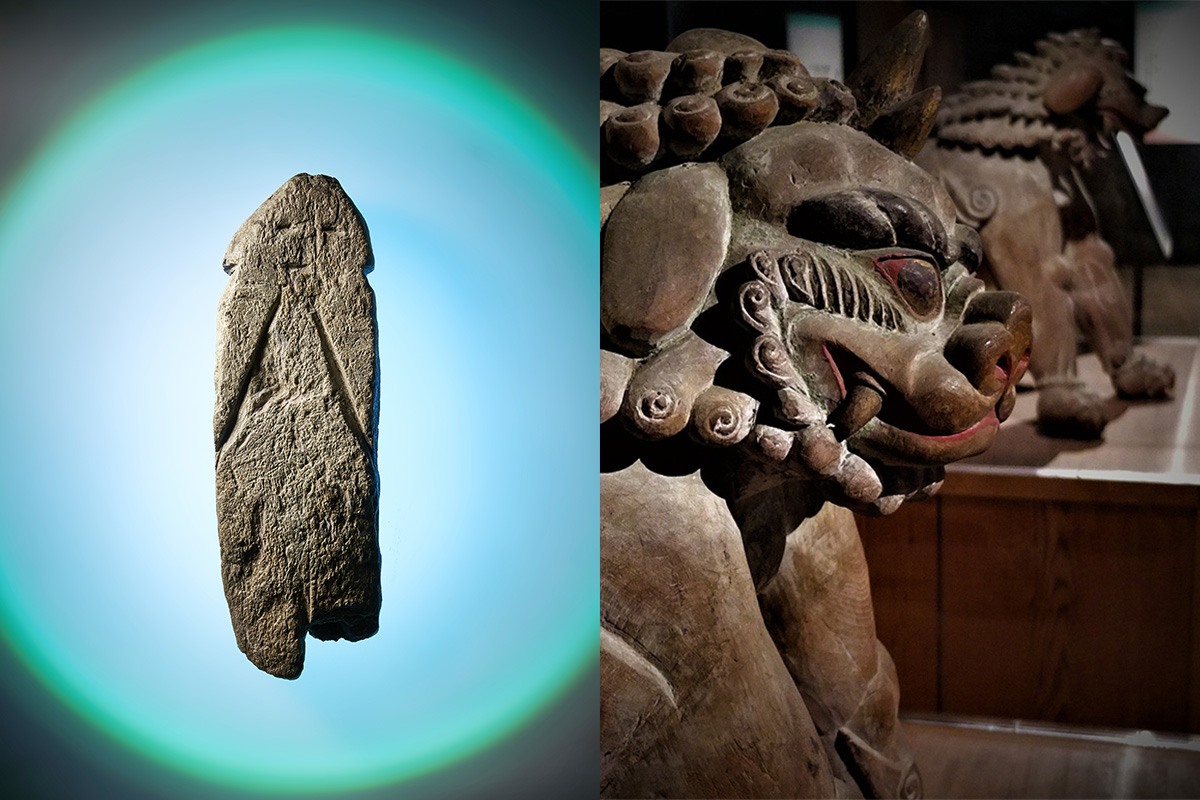
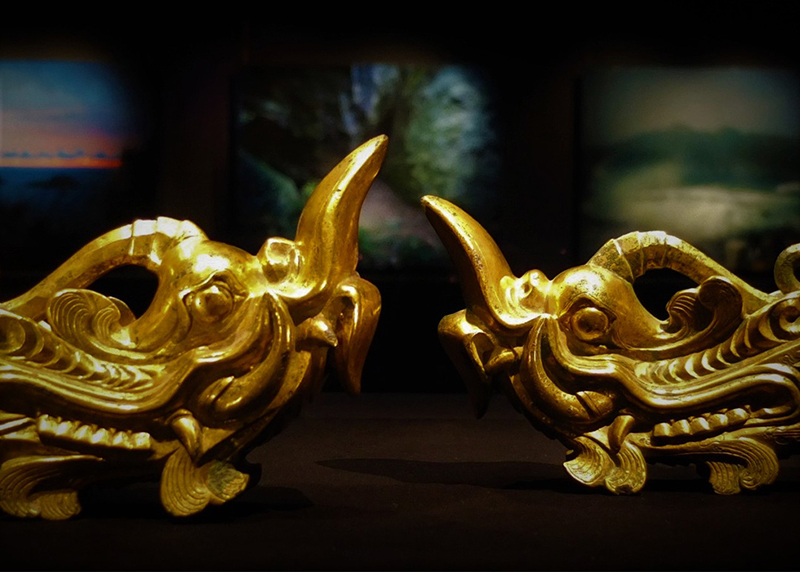
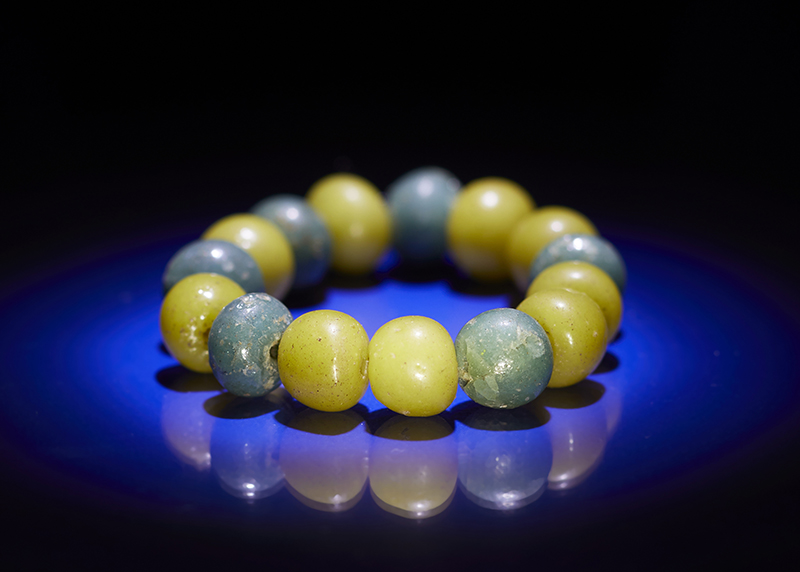

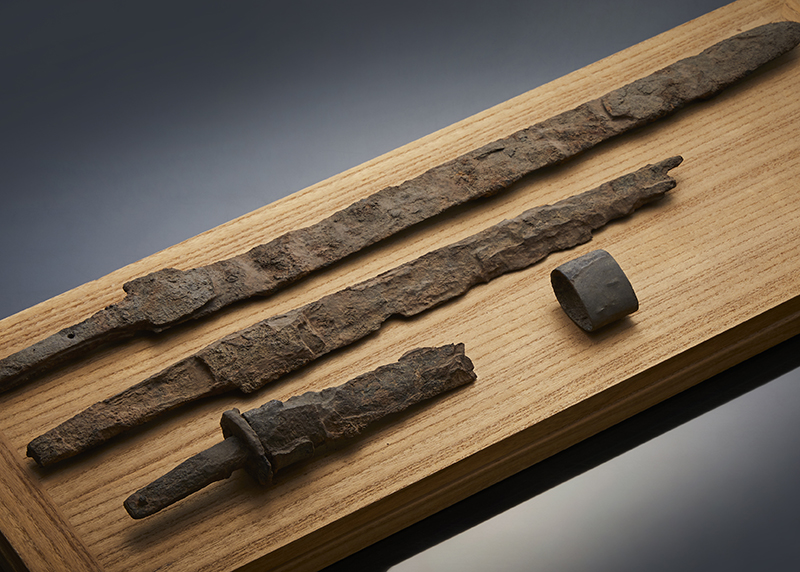
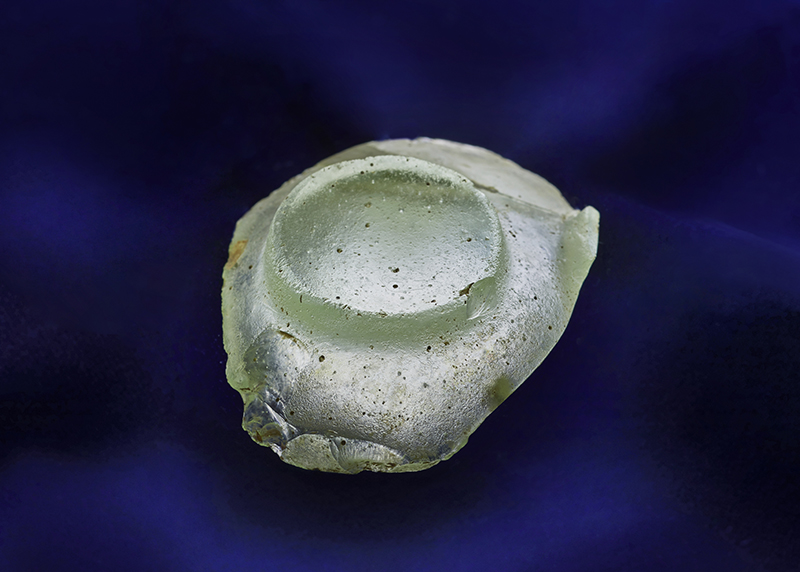
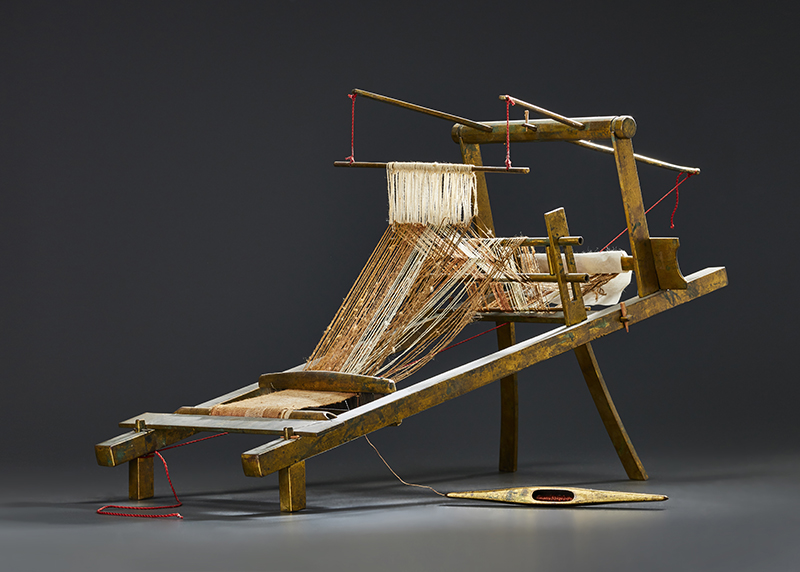
Faith of Okinoshima
According to Japan’s ancient historic chronicle, Nihon Shoki, Amaterasu the sun goddess issued a divine edict to the Three Goddesses of Munakata that they should descend from the heavens to guard the northern sea routes across the Genkai Sea to the Asian mainland, and grant the emperors of Japan protection and assistance, in return for which the emperors would revere and worship the Goddesses. One of the Goddesses, Tagorihime-no-kami was enshrined on Okinoshima, while her sisters were similarly worshipped on Oshima and on the mainland. As reverence for the island and the Three Goddesses grew, so too did a tradition of taboos grow, which served to only strengthen its mystery and that of the Goddess who was said to reside there. The Daiguji (high priests) of Munakata Taisha governed the region and upheld the beliefs and rituals of Okinoshima, ensuring that they would endure through to modernity.
Munakata Taisha
Munakata Taisha is a Shinto shrine covering a vast sacred area linked by the sea, composed of three shrines, Okitsu-miya on the sacred island of Okinoshima, 60km off the Kyushu mainland, Nakatsu-miya on the island of Oshima, and Hetsu-miya on the mainland. Each of these three shrines is dedicated to one of the Three Goddesses of Munakata. For centuries the rituals and traditions of Okinoshima were upheld and honored by the Munakata clan, the ruling noble family who were not only the chief worshippers, but also served as the high priests of the shrine.
In the early modern era from the 17th onwards Munakata Taisha grew in influence under the patronage of the Kuroda family, the feudal lords of Fukuoka domain. It is this influence and reverence for Okinoshima that have kept the traditions alive to this day, supported by the local community that makes its living from the natural riches of the Genkai Sea and surrounding area.
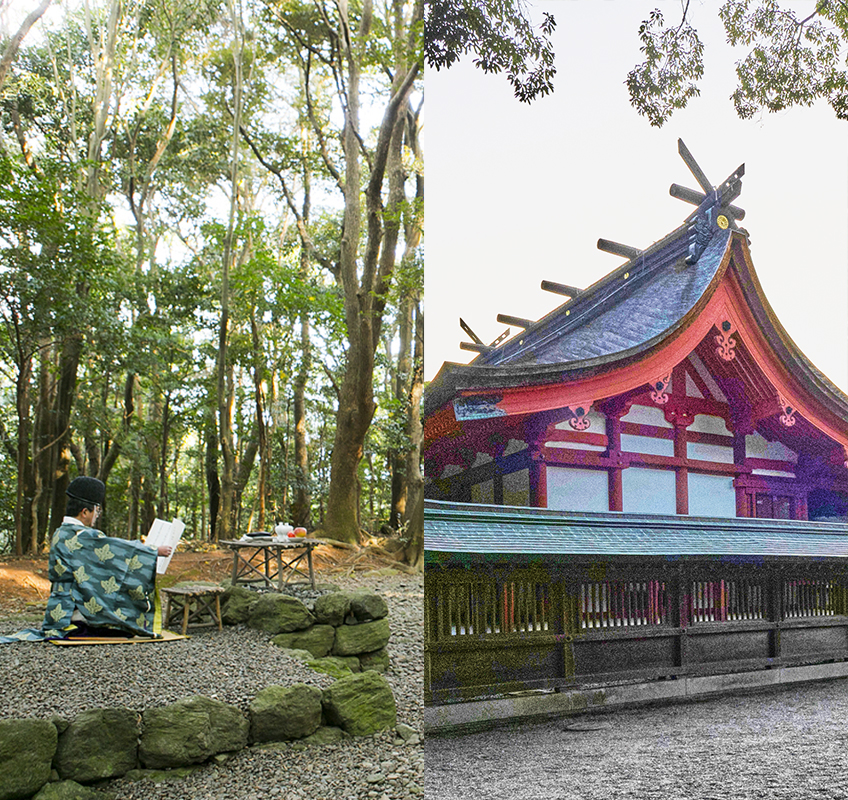
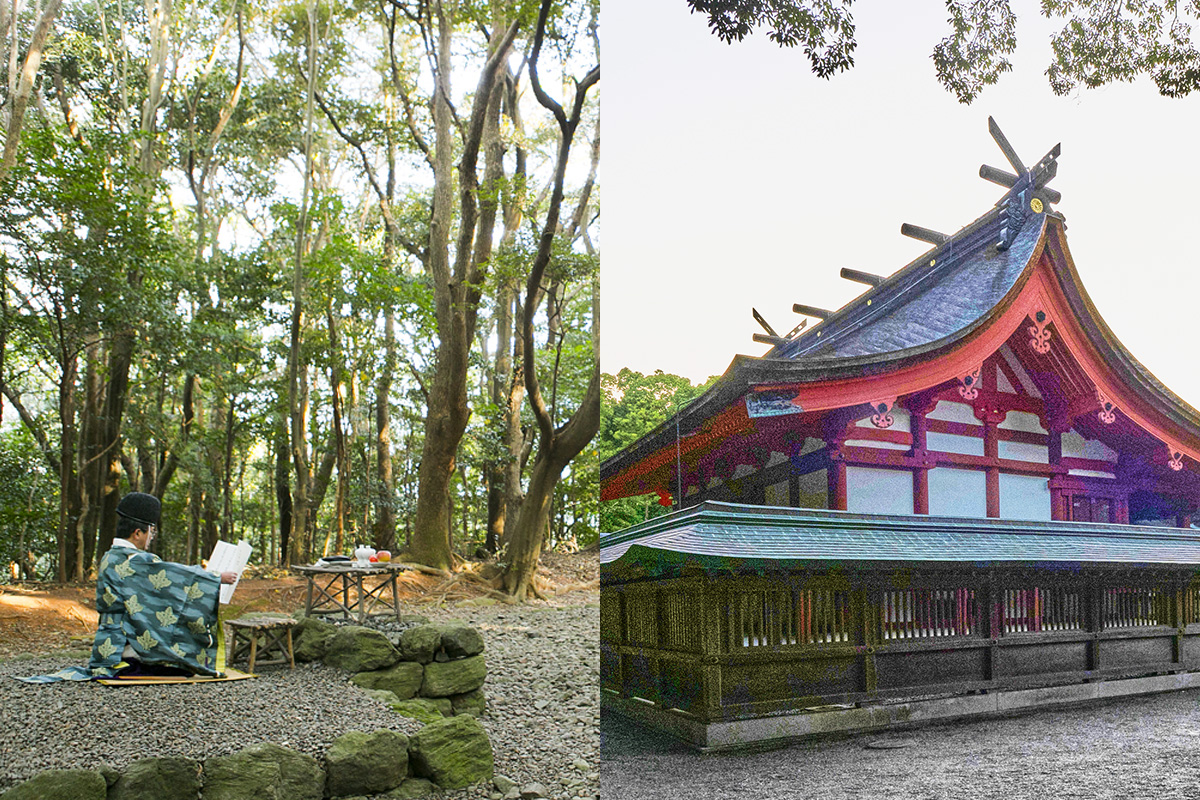
A Visit to Hetsu-miya,
Munakata Taisha
A visit to Hetsu-miya would not be complete without taking the short stroll up the wooded hillside to the ancient Takamiya Saijo (ceremonial site), situated in a woodland clearing above the shrine precincts. This is the place where it is said the Three Goddesses of Munakata first descended to earth.
When visiting shrines throughout Japan it is common practice to bow once at the torii shrine gate before entering the shrine precincts. Next, after washing your hands and rinsing your mouth at the purification fountain (temizu-sha) proceed to the main hall to pay your respects, bowing twice, clapping twice, then bowing once more.
After exploring the shrine precincts, why not stop by the Shimpokan, the museum housing the National Treasures of Okinoshima and see these exquisite and rare artifacts for yourself? Shimpokan is open year round and makes the perfect end to a visit to Munakata Taisha.
Usage Guide
Access
By Plane & By Shinkansen
By Car & By JR Line
Our location is just 20 minutes by car from Wakamiya Interchange on the Kyushu Expressway. Convenient free parking is available inside Munakata Taisha Shrine. Enjoy a comfortable drive and easy access to our destination!
By Train & By Bus
Site Map & Recommended Route
FAQ
Can I visit Okinoshima?
Okinoshima is located 60km off the coast and is closed to the public to preserve its sacredness and historical significance. Visitors are welcome to visit Oshima, located just a short ferry ride away from the mainland, which is home to Nakatsu-miya shrine and Okitsu-miya Yohaisho, from where you can see Okinoshima from afar on a clear day. Click here for detailed access information.
Do the exhibits at Shimpokan change?
Yes, the exhibits are updated approximately twice a year.
Is the museum ever closed?
The museum does not have regular closing days. However, it may close temporarily for maintenance or due to adverse weather conditions. If you would like to confirm whether Shimpokan is open, please call this number: 0940-62-1311
Is Shimpokan an accessible venue?
Yes, Shimpokan is equipped with elevators and ramps to ensure accessibility for all visitors. A limited number of wheelchairs are also available for use inside the museum.
Can I eat or drink inside the museum?
Eating and drinking are not allowed inside Shimpokan. There are designated areas outside where you can enjoy refreshments.
For any other questions, please feel free to contact us via our official website or by phone.